5. Single acting cylinder¶
A single acting cylinder is a cylinder whose rod comes out due to compressed air introduced at the rear.
The entry movement of the rod is carried out thanks to a spring that has little force, so it is not useful for moving external loads.
This cylinder can exert force outwards, but it hardly exerts any force when moving inwards.
Single-acting cylinders are controlled by a 3/2 valve that can inject compressed air through one path or let the compressed air escape from the cylinder through that same path towards the atmosphere.
Below is the schematic at rest of the single-acting cylinder:
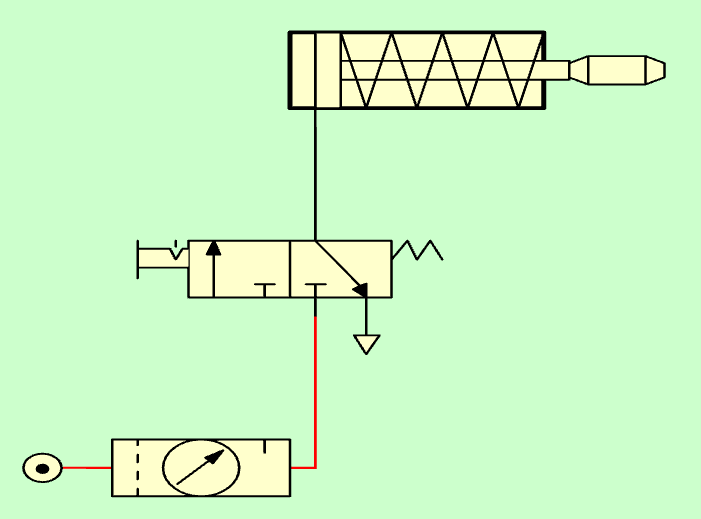
When we activate the 3/2 valve, the air coming from the maintenance unit passes to the upper valve path and enters the rear part of the cylinder. As a consequence, the cylinder fills with air and the rod leaves the cylinder pushing the load in front of it:
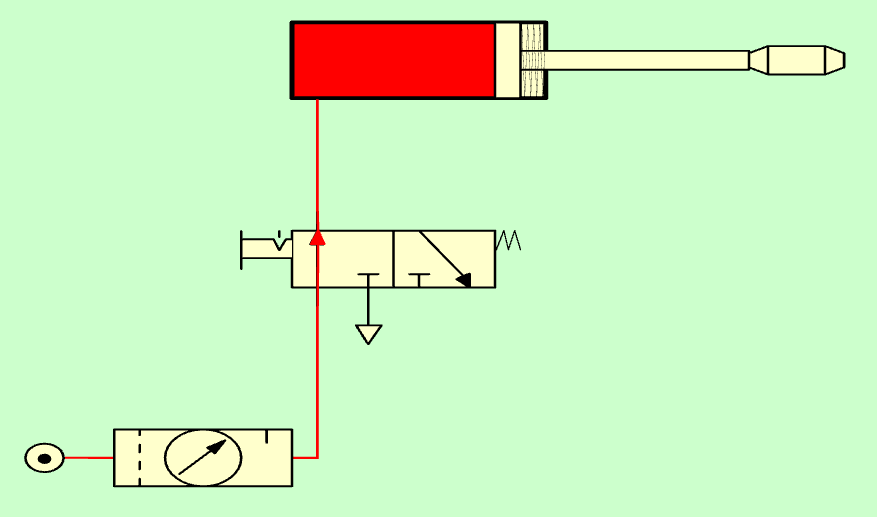
Finally, when the 3/2 valve is brought to rest, the compressed air inside the cylinder returns to the rear and exits through the exhaust port of the 3/2 valve:
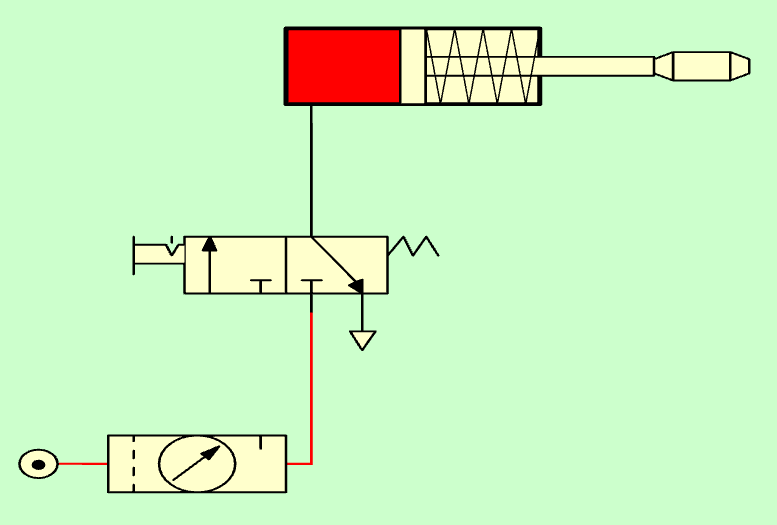
In the following simulator, you can try to simulate all the movements of the single-acting cylinder:
Cylinder with charge¶
If we add a load so that the cylinder drags it and an air flow regulator so that the filling slows down, we can see how the cylinder needs a minimum pressure before starting to move:
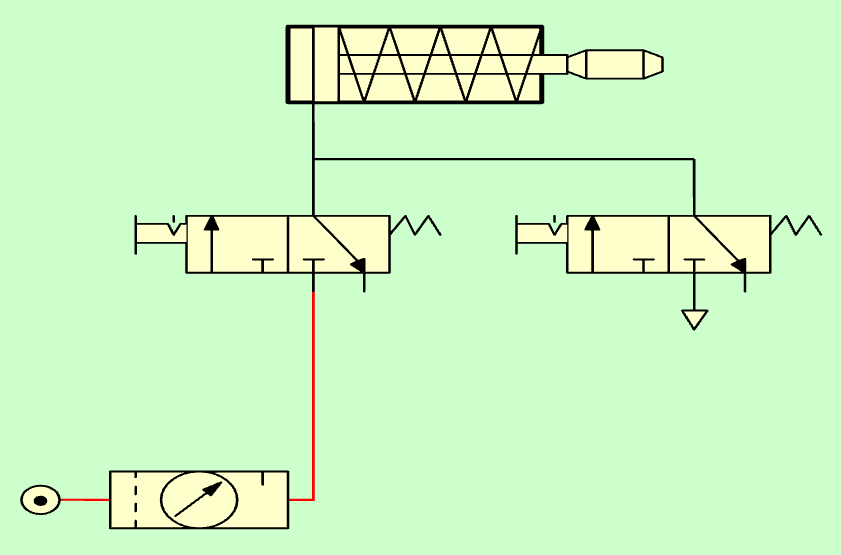
Single-acting cylinder dragging 20kg of load, exiting.¶
In the following simulator you can simulate the operation of the single-acting cylinder with load:
Exercises¶
Explain the main characteristics of a single-acting cylinder.
Draw a diagram of a single-acting cylinder at rest, controlled by a 3/2 valve.
Draw a diagram of a powered single-acting cylinder, controlled by a 3/2 valve.
Simulates the operation of a single-acting cylinder controlled by a 3/2 valve.
What will happen if we remove the exhaust from the 3/2 valve? Simulates operation. Explain how the operation changes when removing the exhaust and explain why it behaves that way.
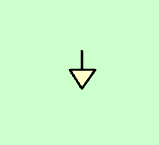
Pneumatic exhaust.¶
Draw again in this simulator the same diagram that appears above on the loaded cylinder.
Remember to select
Edit... Modify.from the menu and click on the pneumatic cylinder and the flow throttle valve to change their values.Remember to select
Edit... Flip.in the menu to change the direction of the non-return valve.Change the cylinder load to 60kg. What minimum pressure does the cylinder need to start coming out?